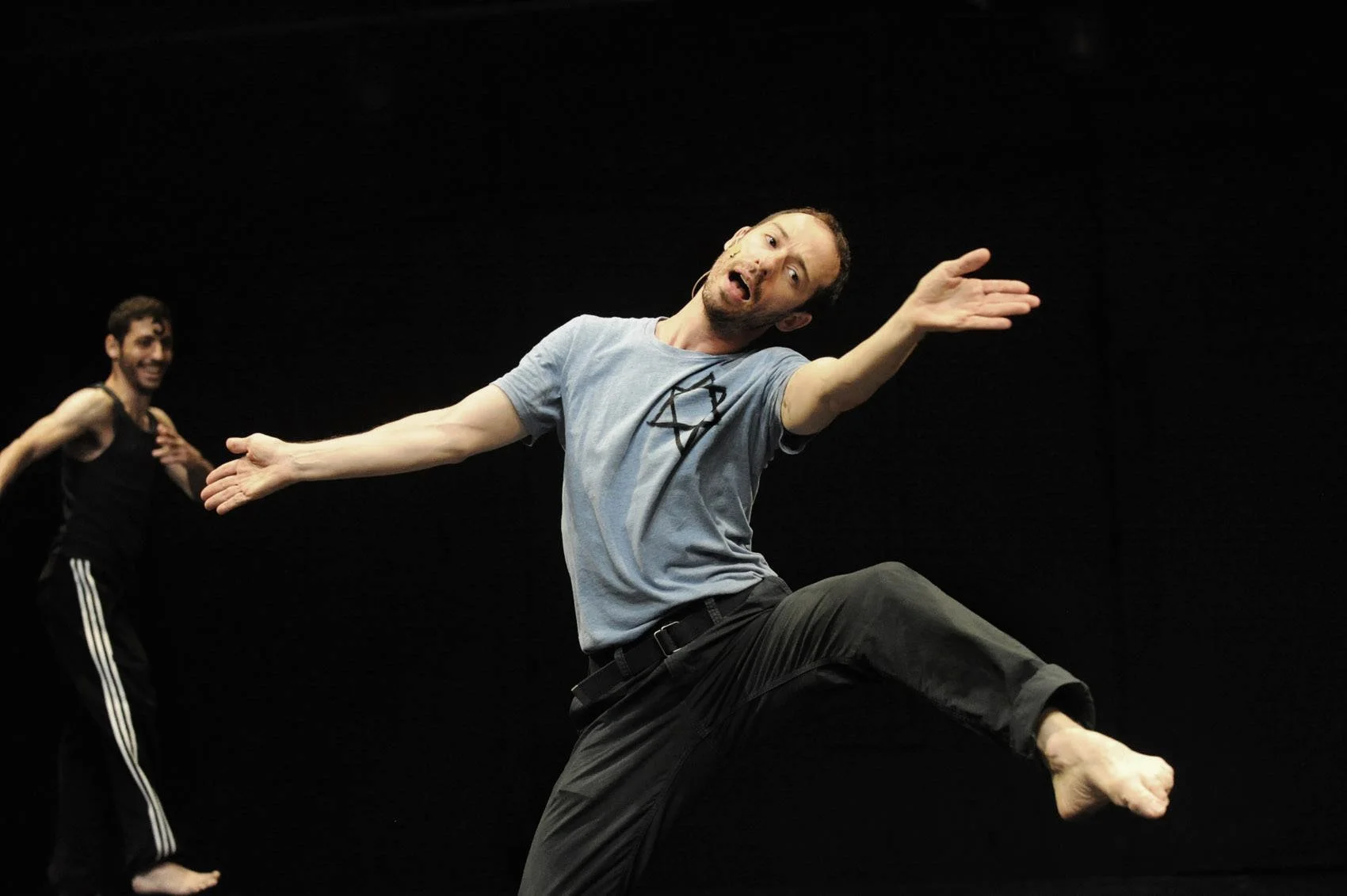Dance review: Israeli artist Hillel Kogan's We Love Arabs proves hilariously provocative
The excellent dance-theatre hybrid explores prejudices as it skewers the choreographic process
We Love Arabs.
The Dance Centre and Théâtre la Seizième copresent We Love Arabs on April 14 in French and April 15 in English at the Scotiabank Dance Centre as part of The Dance Centre’s Global Connections Series
ISRAELI ARTIST HILLEL KOGAN’s bio describes him as a choreographer, dancer, dramaturge and teacher. Add comedian to the list. We Love Arabs, his excellent dance-theatre hybrid now having its Western Canadian premiere in Vancouver, had the opening-night audience in stitches.
His humour is fiercely intelligent. In We Love Arabs, Kogan uses it to address complex, challenging subjects like race, religion, unconscious bias, ego, culture, and war. He confronts the concept of the “other”, and although the piece centres on the fractured relationship between Jews and Arabs in Israel, it reflects the ways in which power, prejudice, and pride can play out, potentially terribly, in the wider world.
Kogan takes on the auto-critical role of an Israeli choreographer who wants to create a duet about identity and coexistence with an Arab artist (French-Arab dancer-actor Mourad Bouayad). The piece is as much about politics, political correctness, and prejudgments (consider the way Kogan suggests that Bouayad doesn’t “look” Arab) as it is about the choreographic process itself—which he sends up hilariously.
Addressing the audience head-on at the start, Kogan talks about the challenges he’s having with the exercise of creation, referring to the body in the space and how some places in the space are trying to tell him something… making less and less sense as he goes. He describes to Bouayad the ideas he wants to convey through his choreography and instructs him on how to do each and every gesture, the two moving together through directives like: “OK, OK, OK. Very nice. Let’s go down to the floor now. We’re going to enter a totally different world, the world of childhood memories. Right. It’s like a fetus. Inside, introvert. Breathe. Take your time. Breathe, Mourad. I can’t hear you breathing!” (Kogan draws on Gaga, a method he teaches that was developed by famed Israeli choreographer Ohad Naharin. The style focuses on listening to the body and its physical sensations so that dancers and nondancers alike can explore new movement possibilities that are outside of their familiar habits.)
Elsewhere in We Love Arabs, Kogan incorporates props, including a bowl of hummus. The food becomes a metaphor for the style of movement his character seeks; for identity and belonging; and even for division and world peace. At one point, the two artists envision themselves travelling along a river, the diameter of the “vicious, bloody circle of hummus”.
Kogan admits outright that a short dance piece can’t create global unity, but We Love Arabs makes viewers think about the walls that separate us, the absurdity of so much discord, and our own complicity in it all. And while it pokes fun at contemporary dance, the work is loaded with compelling artistry and physicality. There are instances, however brief, of tenderness and explosivity between the two dancers, both at home in their agile bodies.













